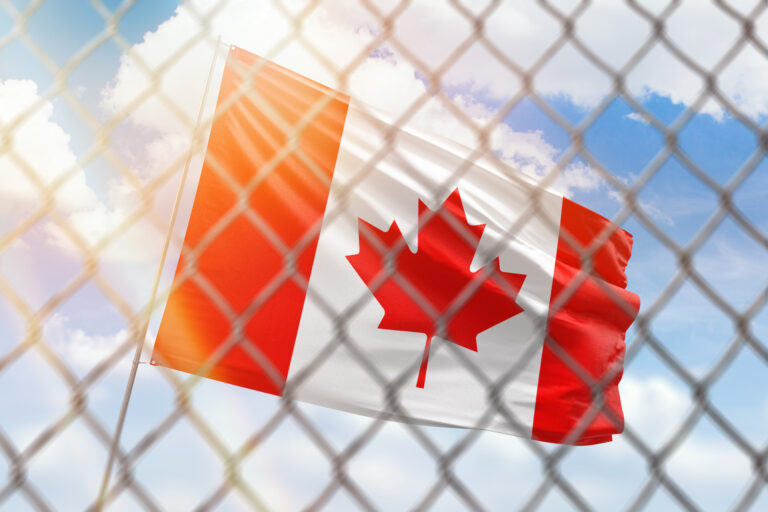After an economic report from earlier this week said that it may be undercounting them by more than a million, Statistics Canada says that starting next month, it will publish new data tables estimating the number of temporary residents in the country.
The revised methodology StatsCan is set to follow will be implemented starting September 27 and will be going back to 2021 to estimate the population of Temporary residents, which includes international students and temporary foreign workers.
As per a CBC story, the new tables will be updated monthly and include additional details, including the breakdown of permit types such as student visas versus the temporary foreign worker visas.
The update was made on Wednesday, after chief economist at CIBC Capital Markets Benjamin Tal told the Liberal government at a gathering in Charlottetown that there is a discrepancy between reported and actual temporary residents in Canada.
This undercounting means that Canada is underestimating the number of homes it needs to solve the housing crisis.
Read More Canada Immigration News
Canada Has A Million More Non-Permanent Residents Than Reported In Official Figures
New Canada Recognized Employer Pilot To Help Employers Hire Temporary Workers
Open Up More Pathways To Permanent Residency For Temporary Foreign Workers, Canada Told
In an interview, Tal was quoted saying that the government estimate of the number of temporary residents was around one million in 2021, while he believes the actual number to be close to two million.
This discrepancy, as per Tal, arose because StatsCan does not count the number of individuals living in Canada without a visa.
While StatsCan software and coding assumes that temporary visa holders leave Canada within 30 days of their visa’s expiration, the majority stay and apply to extend their presence in Canada.
By not taking into consideration this crowd, the agency accounts for only 750,000 of the million temporary residents that are absent from official numbers.
Moreover, a further 250,000 (a majority of which are international students) are absent from census data.
International Students Confused
The latest census asked students to submit their information if they were living in their main residences, but they were told to not fill out the census if they return home to live with their parents during the year.
As this caused confusion among students, not all of them filled the census, believing their main residence to be outside Canada.
“This is why even Statistics Canada believes that the census continues to undercount non-permanent residents with valid visas in Canada,” Tal said.
“The practical implication of that undercounting is that the housing affordability crisis Canada is facing is actually worse than perceived, and calls for an even more urgent and aggressive policy action, including ways to better link the increase in the number of non-permanent residents to the ability to house them.”
Housing Minister Sean Fraser – who was formerly the Minister of Immigration – said in an interview that it is “possible that there are more people, particularly temporary residents, who remain in Canada that might not officially fall within our numbers.”
“But I don’t think that demonstrates that there’s a lack of preparation on the immigration versus housing conversation.”
Watch video:
He also added that he does not believe that Canada needs to decrease its immigration numbers from its current immigration targets of 500,000 new permanent residents by 2025, reports a Globe and Mail article.
Canada is currently aiming to host 900,000 international students in 2023, as told by Immigration Minister Marc Miller to CBC’s The House.
While Miller suggested a possible cap on this number, Quebec pushed back on grounds of education being provincial jurisdiction.
Universities and colleges also contested this policy. For example, Philip Landon, who is interim president of Universities Canada, said that “recent comments conflating international students and the housing crisis are deeply concerning.”
The problems with StatsCan’s process, as per Tal’s CIBC report, create inaccurate forecasts that put governments two years behind in their housing decisions.
The estimates are inaccurate due to many reasons, such as a failure to adequately account for people who could not return to their home countries during COVID-19 and were given extensions to stay in Canada to perform essential jobs.
Statistics Canada, however, defends its numbers, and a statement from the agency said that the number of temporary residents are “accurate, produced using robust mechanisms” and done in collaboration with provinces and territories.
“Please note that non-permanent residents who renew their temporary permits or transition to become a permanent resident are already considered by the demographic estimates.”
The agency also said that the “vast majority” of overstayers are taken into account, and that it is aware that the number of overstayers increased during the pandemic.
Moreover, the StatsCan statement asserted – as reported by Peter Zimonjic of CBC – that while calculating the number of temporary residents “can be more challenging” than for “other groups,” census results are added to demographic estimates in order to catch those temporary residents that the census process missed.
“We constantly evaluate and review our methodology to consider emerging demographic trends and new data needs,” read the StatsCan statement.



